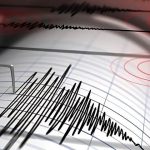On Wednesday, an unfortunate event befell Actress Mandira Bedi, when her husband Raj Kaushal suffered a cardiac arrest and succumbed to it at the age of 49.
Very recently, 29-year-old Danish soccer player Christian Eriksen fell face down on the ground during his country’s match against Finland at the UEFA Euro 2020 championship. While the football star lay motionless, the medic team performed life-saving cardiopulmonary resuscitation (CPR) on the field before he was rushed to the hospital. Later, it was confirmed that the soccer player had suffered a cardiac arrest.
The two events only highlight that cardiac arrest can happen to anyone, young or old. This makes us wonder how we can ensure the safety of ourselves and our loved ones. In such scenarios, it is absolutely necessary for us to be aware of the warning signs of cardiac arrest and also be vigilant and able enough to respond accurately.
Emergency signs to watch out for
Cardiac arrest is one of the most common heart conditions that can be life-threatening if not acted upon on time. It is when the heart suddenly stops beating. Given that our heartbeat is controlled by electrical impulses, when these impulses change their pattern, the heartbeat can become irregular, leading to a state of arrhythmia. When the rhythm of the heart halts, it is when a cardiac arrest occurs, which means that the beating of the heart stops.
When a person has a cardiac arrest, he or she may experience different symptoms. However, according to Dr. Ameya Udyavar, a Consultant Cardiologist and Cardiac Electrophysiologist at P.D Hinduja Hospital & MRC, one needs to differentiate between a cardiac arrest and heart attack. “Cardiac arrest is when the heart beat can go very fast or slow, and the heart stops pumping. This is called cardiac arrest, which is an emergency, unlike a heart attack. Heart attack is different where there is a blood supply shortage,” he says.
Dr. Udyavar discusses the two very important warning signs of cardiac arrest namely ‘episodes of unconsciousness’ and ‘continuous chest pain’. He says, “If a patient suddenly gets unconscious (chakkar, head reeling), it could be a symptom related to heartbeat. So the heartbeat might be either going very fast or slow.”
Apart from that, he warns of patients complaining of chest pain again and again, especially at rest and not exertion. He recommends that patients should then get an ECG done immediately, and if there is a blockage, then do angiography and open the blockage. The risk of cardiac arrest will be less.
Why are young and fit individuals also suffering from cardiac arrest?
Revisiting the recent incident of the Danish football player, Dr. Udyavar says, “So when a young fit individual falls unconscious and has a cardiac arrest, one of the commonest indications is a genetic disorder. The individual might have a gene defect that can cause an electrical abnormality in the heart, which is why it’s making him prone to a cardiac arrest.”
“Athletes who play a lot have an enlarged heart – it’s called an athlete’s heart. Such individuals may develop heartbeat problems where the heartbeat suddenly goes up. Especially if a professional athlete plays many aerobic games, there is a cardiac problem evaluation where the cardiologist sees their ECG and risk of developing a cardiac arrest,” he adds.
The doctor suggests that all professional athletes are screened for ECG and Echo tests so that there is no increase of risk of cardiac arrest in them.
Preventing the possibility of a cardiac arrest in the long run
If you wish to avoid any chances of having a cardiac arrest, it is important that you stay fit and healthy. Eat a diet that is nutritious, less oily, low in cholesterol and carbohydrates. Avoid sugary foods and drinks that can lead to unhealthy weights and increase risk of heart ailments. Physical activity is of utmost importance. It keeps your body fit and avoids any physical illnesses in the long run.
Tweak your lifestyle habits, especially if you’re a smoker and a drinker. Alcohol consumption and cigarette smoking can increase heart complications.
Additionally, you must stay in touch with your doctor and get regular tests to know all about your heart health.
How to respond in the event of a cardiac arrest?
Cardiac arrest can be sudden. It is accompanied by a series of symptoms which may call for different responses. As and when you see someone unconscious or collapsing, with no pulse and no sign of breathing, you must follow these steps immediately.
Step 1: Call emergency medical help (for India: Call 112, 102, or 108).
Step 2: Perform cardiopulmonary resuscitation (CPR) on the person having a cardiac arrest.
Step 3: Use a portable defibrillator, if available. A portable defibrillator comes with a voice mechanism that gives you step-by-step instructions. You will need to charge it first, so in the meantime you can continue performing CPR. As and when it’s charged, the defibrillator will check the rhythm of the person’s heart and advise if a shock is needed. However, if you do not know how to use one, wait for the emergency medical team.
In case you’re waiting for the medical help to arrive, continue performing CPR.
Know how to perform CPR
Here is a step-by-step guide to performing CPR on a person suffering with a cardiac arrest. However, if you are considering proper training, you can attend CPR and First Aid online program, receiving a valid certificate at the conclusion
– If you haven’t already phoned for medical assistance, conduct 30 chest compressions. Place both of your hands on the person’s breastbone in the middle of his or her chest (clasped together).
– Push inward about an inch with a firm and quick push in the centre of the chest.
– At a pace of 100 times per minute, press the button. Between compressions, remember to let the chest rise entirely.
Continue CPR until and unless medical assistance comes.






